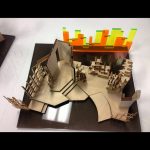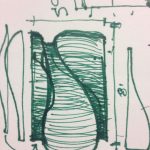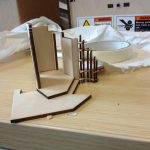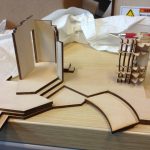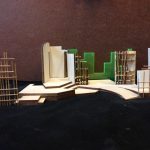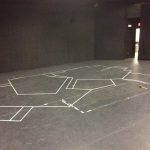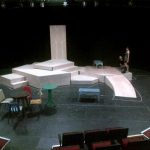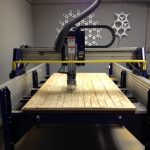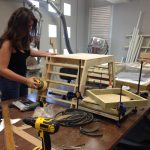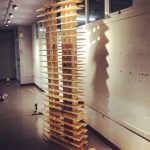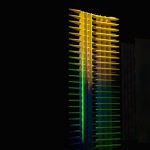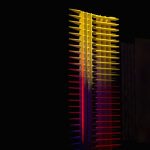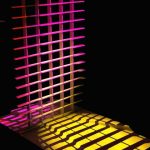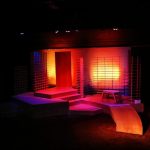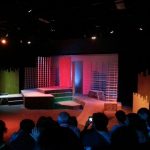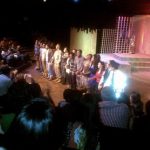Ephemeral Architecture
Stage set design or “ephemeral architecture” is more spontaneous and allows the designer to learn, grow and see their results much faster; its permanence comes from whatever visual and physical experience one has with the design in question.
Professor: Enid Soto Méndez
Location: University of Puerto Rico, Rio Piedras Campus
Project / Date: 2012-2013
TOS[er]: Alexandra Pagán
Posted: May 2013
Q & A with Enid:
What was the purpose of this course?
The purpose of this course was to expose the students to an experience based on a script as a “design originator”. The intention was to design a space that would allow an easy adaptation and transformation for the varying scenes of a script. A minimum amount of elements was to be used to provide different spatial experiences in a reduced space.
What where some of the tools that had to be considered in the design process?
The students had to design with: stage lighting; colors; architectural elements such as: columns, walls, floors, ramps and stairs; material quantity and costs; the construction stage; and functionality and variability.
What was the goal for this experience?
The goal was to go through the rookie experience of designing a space that would go past the design and actually become a built reality. This experience would serve as an outlet for experimentation and the making of rookie mistakes while finding solutions to correct said mistakes before heading into the field as an Architect; where the margin of error allowed is slim to none.
How was the experience working with another faculty/discipline?
We worked in collaboration with the Fine Arts Drama Department. It was an interesting combination since the drama department focused more on how the space would be utilized and not on what the space could provide; this is were we came in. Our team was guided mostly by what the space could provide and how it could explain what type of activity was to take place there. My students had to face the challenge of smoothing out the language in terms of what the user (drama students) could understand and were familiar with. They had to challenge their design in a professional aspect while maintaining a comfortable environment for the user. The students had to learn to work based on instinct rather than tied to strict design rules.
How was the overall experience?
Since there is such a dire need to diversify within the profession of architecture, this provided the students with an outlet to experiment with one of the many options available. Since architecture allows us to have so much knowledge on different subjects the design process came easily to the students. The difficulty was reached during the construction period where kinks appeared and the students had to come up with solutions on the spot. Although it was a one-semester class, the students got so involved and enthusiastic with the project that they worked on it for nearly two semesters just so they could see it become a reality.
What can you say about stage set design as a form of “ephemeral architecture”?
Traditionally, architectural satisfaction is achieved by leaving a permanent long-term mark in the world. On the other hand, film and theatre design provide satisfaction on a short-term basis. Stage set design or “ephemeral architecture” is more spontaneous and allows the designer to learn, grow and see their results much faster; its permanence comes from whatever visual and physical experience one has with the design in question.
TOS[er] Reaction: This experience provided the students with a refreshing way to tackle today’s architecture. Since technology – i.e. our way of life – is constantly changing and shifting, architects are obligated to adapt to such changes and redefine the profession in order to avoid becoming obsolete. By using the concept of “ephemeral architecture”, Enid Soto helped the students get familiarized with one of many innovative branches of the field. The students had the unique opportunity, to, not only reach the construction phase of their design, but to build it themselves as well. By promoting an environment for innovation, experimentation and multidisciplinary collaboration, Enid allowed her students to experience the real life design process of today from start to finish.

